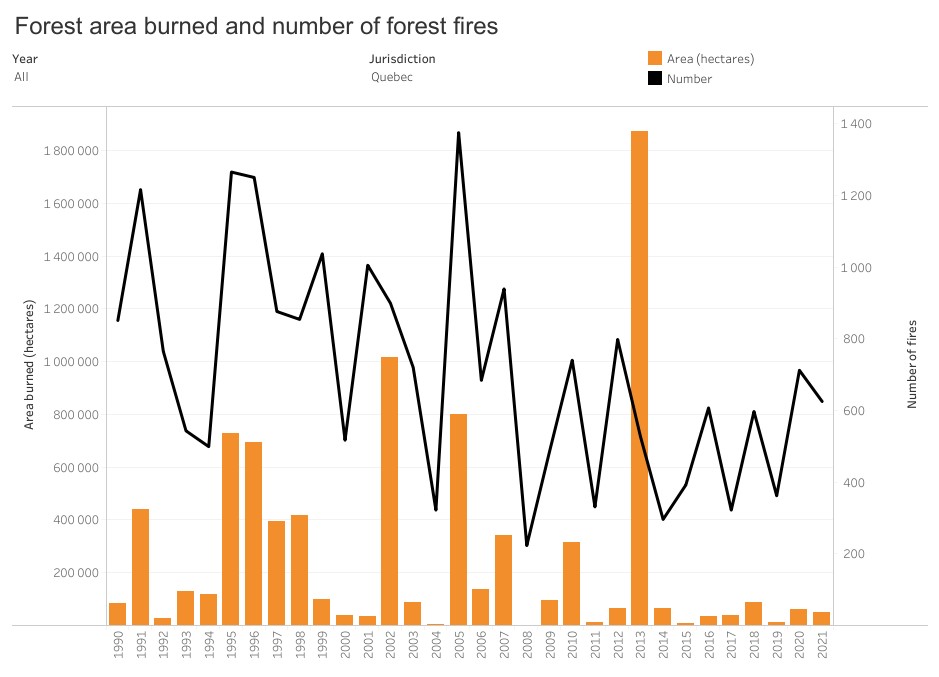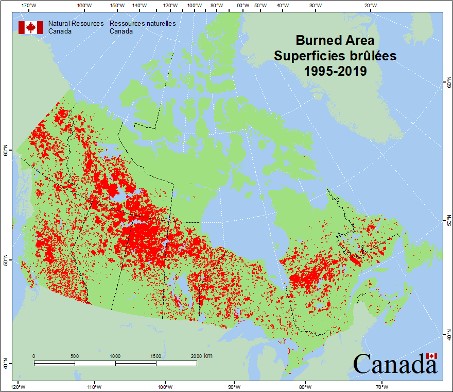Forest fires
Several factors influence forest fires, which makes it complicated to determine what proportion of them can be attributed to climate change. Human influence and the quantity and type of fuel play a major role in forest fires.
Interannual variability

Figure 1: Annual variability of forest area burned and number of forest fires between 1990 and 2021 in Quebec. The orange histogram represents the annual surface areas burned, while the black line represents the number of fires per year. (From: National Forestry Database, 2023)
As the figure below illustrates, forest fires in Quebec are highly variable from one year to the next. This variation can be attributed to the many factors that influence wildfires. It is also noteworthy that no significant trend can be observed between 1990 and 2021. However, this is too short a period of time to fully grasp the impacts of climate change, which requires observation over a much longer period of time. Specific data on forest fires in Quebec has only been available since the early 1990s, making it impossible to identify trends based on earlier data.
The influence of climate and vegetation on forest fire zones in Quebec

Figure 2 : Surface area burned in Canada between 1995 and 2019. (From : RNCan, 2023b).
Climatic conditions and the variety of forest species vary considerably from one part of the province to another, and this has an influence on the ignition and spread of fires. For example, the climate is generally very wet in Côte-Nord, while the James Bay area has a relatively drier climate, making it more prone to forest fires.
In the north of the province, conifers are more abundant than in the south. Thus, Northern Quebec is more prone to wildfires. Furthermore, trends indicate that forest fire frequency is also higher in the north and west than in the south and east of the province, which can be explained by lower precipitation in these regions. Dry vegetation is maintained in areas with less rainfall, increasing combustibility.
The increase in temperatures in recent years has been conducive to forest fires in these regions. This trend is set to continue in the context of climate change. As far as lightning is concerned, no trends in intensity or frequency are available at present.